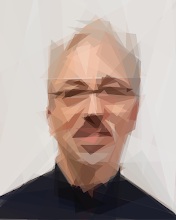
Exams have been marked. Most of you will find your estimate was pretty accurate, but a few cases differ more than 10%, some underestimated and others overestimated their mark. It is ok. Those having no mark is because they did not show up for the exam.
We've won three new students that just showed up for the exam (so they have 0% attendance), for these people, welcome to the class, I hope to see you more often. It is likely some new Erasmus students will join us for the 2nd term too.
Exam average mark is 45% and term average mask is 50%. Both Juan and Anush are our top scorers this term, congratulations!
However, our top scorer in the exam was not any of them but Michał, who scored 80%, congratulations too!
The most difficult question seemed to be (17) how to print the IP address of a received datagram packet. Nobody realized getAddress method returns a InetAddress object and not an IP address dotted decimal string. For that, getHostAddress method was needed.
Those of you below of 40% this term really need to get up to speed to pass this subject. Whether you plan on just focus on the second term or repeat the first term exam too is up to you. But I strongly recommend you to work quite a bit harder not to fail the subject.
To see the list you can click this entry title or just go to the attendance record link where all the details are found.
Update: You can now check marked exams. Please email me if you find any marking error you want me to have a look at.



